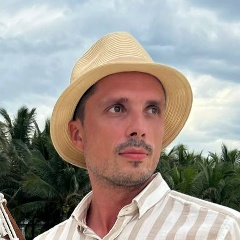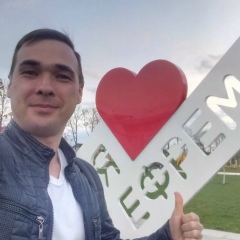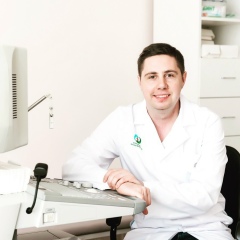Как известно, Федор Михайлович Достоевский сначала был вовсе не писателем. Читаем в воспоминаниях некоего А.И. Савельева: «Интереснее для меня на дежурстве были беседы со мною кондукторов Григоровича и Достоевского.» Ладно, кондуктором трамвая он тоже не был, хотя звучит, конечно, почти также романтично, как «Цой, работающий в кочегарке». Пока трамваи не успели появиться, кондукторами называли учащихся некоторых учебных заведений, и Достоевский с Григоровичем здесь обозначены всего лишь как будущие военные инженеры, а на тот момент воспитанники Главного инженерного училища в Санкт-Петербурге и по совместительству обитатели Инженерного замка. Продолжаем читать:
«Оба были весьма образованные юноши, с большим запасом литературных сведений из отечественной и иностранной литературы; и каждый из этих юношей, по свойствам своего характера, возбуждал во мне живой интерес. Трудно было отдать преимущество в их рассказах кому-либо более, чем другому. Что-то глубоко обдуманное, спокойное видно было в рассказах Достоевского и, напротив, живое, радостное являлось в рассказах Григоровича.»
Мимими! Но самое интересное дальше: «Оба они занимались литературою более, нежели наукою; [...] Сам Достоевский был редактором литографированной при училище газеты "Ревельский сняток".» Ревельский — это в честь Таллина. Красиво. Вы все были студентами, может, делали какие-то студенческие газеты, вам бы пришло в голову назвать газету, издаваемую в петербургском вузе, скажем, «Берлинский лосось»? Впрочем, что такое «сняток» (орфография источника сохранена) — тоже непонятно, может, и не рыбка вовсе, тем более, что в Таллине актуальнее килька или салака. Неважно. Вот про Ревель интереснее.
Такие штуки часто выпадают из зоны внимания, но вообще у Ф.М. Достоевского был старший брат, Михаил. Не близнец, но, например, в Инженерное училище они поступали вместе — разница в возрасте была небольшой. И Ф.М. взяли, а брата не взяли. Совершенно не понимаю устройства тогдашнего образования, но в общем, вместо Петербурга Михаил в итоге оказался в Таллине — его зачислили служить в Ревельскую инженерную команду (примерно то же самое, но менее престижно, чем в столице). Пока младший брат учился, старший успел жениться на эстонке... Точнее, конечно, на немке — Эмилии Федоровне фон Дитмар, с которой угадайте где познакомился.
Дом, в котором размещали служащих военных инженеров, находился по адресу Uus, 10 в Старом городе. И хотя Михаил с женой прожили здесь довольно много времени, а Ф.М. Достоевский бывал лишь наездами, в гостях, несложно догадаться, кому посвящена доска, висящая на доме. У братьев были хорошие отношения. После относительно ранней смерти брата, Федор Михайлович взял на себя заботу о его семье.
Отношения же с "эстонской" невесткой (на тот момент все уже жили в Петербурге) были сложнее. Сохранилось такое, не очень довольное, и, может, не без оснований, воспоминание Анны Достоевской (второй жены писателя): «Невестка его, Эмилия Федоровна Достоевская, была добрая, но недалекая женщина. Видя, что после смерти ее мужа Федор Михайлович принял на себя заботы о ней и ее семье, она сочла это его обязанностью и была очень поражена, узнав, что Федор Михайлович хочет жениться. Отсюда ее неприязненный тон ко мне, когда я была невестой. Но когда свадьба наша состоялась, Эмилия Федоровна примирилась с совершившимся фактом, и обращение ее со мной стало любезнее, особенно когда она увидела, что я так внимательна к ее детям. Бывая у нас почти ежедневно и считая себя отличной хозяйкой, она постоянно давала мне советы по хозяйству. Возможно, что это происходило от доброты душевной и желания принести мне пользу, но так как ее наставления делались всегда при Федоре Михайловиче, то мне было не совсем приятно, что в глазах его так настойчиво выставлялись моя нехозяйственность и небережливость. Но еще неприятнее для меня было то, что она постоянно ставила мне в пример во всем первую жену Федора Михайловича, что было довольно бестактно с ее стороны.»
Современный дом на Уус, 10 — жилой. Хорошо вписывается в городской ландшафт (видите, башенки Вируских ворот вдалеке?). Не очень понимаю, перестроен или нет (в реестре домов указан 1917 год). Однако оцените старинный домофон с огромными кнопками и дверь. Пожалуй, это единственный адрес Достоевского в Таллине-Ревеле, так-то он, конечно, все больше обитал в Петербурге.
Этот пост был написан специально для [id200824404|Марии Эрих], которая просила рассказать о Достоевском в #estonian_challenge
P.S. Кстати, найди котэ. В смысле, найдите на фотке мой велосипед, который гуляет со мной по Таллину и сливается с местным пейзажем)
http://1.bp.blogspot.com/-LevovBYJuzw/VRRwq_ezUZI/AAAAAAAAFhg/AS3GnTKzOzM/s1600/72258274.jpg
https://upload.wikimedia.org/wikipedia/commons/thumb/a/a2/Mikhail_Dostoyevsky.jpg/267px-Mikhail_Dostoyevsky.jpg
«Оба были весьма образованные юноши, с большим запасом литературных сведений из отечественной и иностранной литературы; и каждый из этих юношей, по свойствам своего характера, возбуждал во мне живой интерес. Трудно было отдать преимущество в их рассказах кому-либо более, чем другому. Что-то глубоко обдуманное, спокойное видно было в рассказах Достоевского и, напротив, живое, радостное являлось в рассказах Григоровича.»
Мимими! Но самое интересное дальше: «Оба они занимались литературою более, нежели наукою; [...] Сам Достоевский был редактором литографированной при училище газеты "Ревельский сняток".» Ревельский — это в честь Таллина. Красиво. Вы все были студентами, может, делали какие-то студенческие газеты, вам бы пришло в голову назвать газету, издаваемую в петербургском вузе, скажем, «Берлинский лосось»? Впрочем, что такое «сняток» (орфография источника сохранена) — тоже непонятно, может, и не рыбка вовсе, тем более, что в Таллине актуальнее килька или салака. Неважно. Вот про Ревель интереснее.
Такие штуки часто выпадают из зоны внимания, но вообще у Ф.М. Достоевского был старший брат, Михаил. Не близнец, но, например, в Инженерное училище они поступали вместе — разница в возрасте была небольшой. И Ф.М. взяли, а брата не взяли. Совершенно не понимаю устройства тогдашнего образования, но в общем, вместо Петербурга Михаил в итоге оказался в Таллине — его зачислили служить в Ревельскую инженерную команду (примерно то же самое, но менее престижно, чем в столице). Пока младший брат учился, старший успел жениться на эстонке... Точнее, конечно, на немке — Эмилии Федоровне фон Дитмар, с которой угадайте где познакомился.
Дом, в котором размещали служащих военных инженеров, находился по адресу Uus, 10 в Старом городе. И хотя Михаил с женой прожили здесь довольно много времени, а Ф.М. Достоевский бывал лишь наездами, в гостях, несложно догадаться, кому посвящена доска, висящая на доме. У братьев были хорошие отношения. После относительно ранней смерти брата, Федор Михайлович взял на себя заботу о его семье.
Отношения же с "эстонской" невесткой (на тот момент все уже жили в Петербурге) были сложнее. Сохранилось такое, не очень довольное, и, может, не без оснований, воспоминание Анны Достоевской (второй жены писателя): «Невестка его, Эмилия Федоровна Достоевская, была добрая, но недалекая женщина. Видя, что после смерти ее мужа Федор Михайлович принял на себя заботы о ней и ее семье, она сочла это его обязанностью и была очень поражена, узнав, что Федор Михайлович хочет жениться. Отсюда ее неприязненный тон ко мне, когда я была невестой. Но когда свадьба наша состоялась, Эмилия Федоровна примирилась с совершившимся фактом, и обращение ее со мной стало любезнее, особенно когда она увидела, что я так внимательна к ее детям. Бывая у нас почти ежедневно и считая себя отличной хозяйкой, она постоянно давала мне советы по хозяйству. Возможно, что это происходило от доброты душевной и желания принести мне пользу, но так как ее наставления делались всегда при Федоре Михайловиче, то мне было не совсем приятно, что в глазах его так настойчиво выставлялись моя нехозяйственность и небережливость. Но еще неприятнее для меня было то, что она постоянно ставила мне в пример во всем первую жену Федора Михайловича, что было довольно бестактно с ее стороны.»
Современный дом на Уус, 10 — жилой. Хорошо вписывается в городской ландшафт (видите, башенки Вируских ворот вдалеке?). Не очень понимаю, перестроен или нет (в реестре домов указан 1917 год). Однако оцените старинный домофон с огромными кнопками и дверь. Пожалуй, это единственный адрес Достоевского в Таллине-Ревеле, так-то он, конечно, все больше обитал в Петербурге.
Этот пост был написан специально для [id200824404|Марии Эрих], которая просила рассказать о Достоевском в #estonian_challenge
P.S. Кстати, найди котэ. В смысле, найдите на фотке мой велосипед, который гуляет со мной по Таллину и сливается с местным пейзажем)
http://1.bp.blogspot.com/-LevovBYJuzw/VRRwq_ezUZI/AAAAAAAAFhg/AS3GnTKzOzM/s1600/72258274.jpg
https://upload.wikimedia.org/wikipedia/commons/thumb/a/a2/Mikhail_Dostoyevsky.jpg/267px-Mikhail_Dostoyevsky.jpg
As you know, Fyodor Dostoevsky was not a writer at first. We read in the memories of a certain A.I. Savelyev: “It was more interesting for me on duty to talk with me conductors Grigorovich and Dostoevsky.” Okay, he also was not the conductor of the tram, although it sounds, of course, almost as romantic as “Choi, working in a stoker.” While the trams did not appear, the conductors called students of some educational institutions, and Dostoevsky and Grigorovich are designated here only as future military engineers, and at that time pupils of the Main Engineering School in St. Petersburg and part-time inhabitants of the Engineer's Castle. We continue to read:
“Both were very educated young men, with a large supply of literary information from domestic and foreign literature; and each of these young men, according to the properties of his character, excited a lively interest in me. It was difficult to give an advantage in their stories to someone more than another. Something deeply thoughtful, calm was evident in the stories of Dostoevsky and, on the contrary, the living, joyful was in the stories of Grigorovich. "
Mimimi But the most interesting thing is further: “Both of them were engaged in literature more than science; [...] Dostoevsky himself was the editor of the newspaper Revelsky Slitok, lithographed by the school. ”Revelsky is in honor of Tallinn. Handsomely. You were all students, maybe you were doing some student newspapers, would you even think of calling a newspaper published in a St. Petersburg university, say, “Berlin Salmon”? However, what a “snapshot” is (the spelling of the source is preserved) is also unclear, maybe not a fish at all, especially since sprat or sprat are more relevant in Tallinn. Never mind. That's about Revel more interesting.
Such pieces often fall out of the attention zone, but in general with FM. Dostoevsky was the eldest brother, Michael. Not a twin, but, for example, they entered the Engineering School together - the age difference was small. And F.M. They took, but they did not take the brother. I don’t understand the structure of the education at that time, but in general, instead of Petersburg, Mikhail ended up in Tallinn - he was enrolled to serve in the Revel engineering team (roughly the same, but less prestigious than in the capital). While the younger brother was studying, the elder had time to marry an Estonian ... More precisely, of course, a German woman - Emilia Fyodorovna von Ditmar, with whom you guess where he met.
The house where military engineers were housed was located at Uus, 10 in the Old Town. And although Michael and his wife lived here for quite a long time, and F.M. Dostoevsky was only on short visits, it was easy to guess who the board hanging on the house was dedicated to. The brothers had a good relationship. After the relatively early death of his brother, Fyodor Mikhailovich took care of his family.
Relations with the “Estonian” daughter-in-law (at that time everyone was already living in Petersburg) were more complicated. Such a thing was preserved, not very contentedly, and, perhaps not without reason, the memory of Anna Dostoevskaya (the writer's second wife): “His daughter-in-law, Emilia Fyodorovna Dostoevskaya, was a kind but not far-off woman. Seeing that after the death of her husband, Fyodor Mikhailovich took care of her and her family, she considered it his duty and was very amazed to learn that Fyodor Mikhailovich wanted to marry. Hence its hostile tone to me when I was a bride. But when our wedding took place, Emilia Fyodorovna reconciled with the accomplished fact, and her treatment with me became more gracious, especially when she saw that I was so attentive to her children. Visiting us almost every day and considering herself an excellent hostess, she constantly gave me advice on the housekeeping. It is possible that this came from the kindness of the soul and the desire to benefit me, but since her instructions were always done under Fedor Mikhailovich, it was not at all pleasant for me that my lack of economy and non-thrift were so persistently exposed in his eyes. But even more unpleasant for me was the fact that she constantly set me as an example throughout my first wife, Fyodor Mikhailovich, which was rather tactless on her part. ”
Modern house on Uus, 10 - residential. Fits well into the urban landscape (see, turrets of the Viru gate away?). I do not really understand whether it was rebuilt or not (1917 is indicated in the register of houses). However, appreciate the vintage intercom with huge buttons and a door. Perhaps this is the only address of Dostoevsky in Tallinn-Revel, so he, of course, increasingly lived in St. Petersburg.
This post was written specifically for [id200824404 | Maria Erich], who asked to tell about Dostoevsky in #estonian_challenge
P.S. By the way, find kote. I mean, find my bike in the photo, which walks with me in Tallinn and merges with the local landscape)
http://1.bp.blogspot.com/-LevovBYJuzw/VRRwq_ezUZI/AAAAAAAAFhg/AS3GnTKzOzM/s1600/72258274.jpg
https://upload.wikimedia.org/wikipedia/commons/thumb/a/a2/Mikhail_Dostoyevsky.jpg/267px-Mikhail_Dostoyevsky.jpg
“Both were very educated young men, with a large supply of literary information from domestic and foreign literature; and each of these young men, according to the properties of his character, excited a lively interest in me. It was difficult to give an advantage in their stories to someone more than another. Something deeply thoughtful, calm was evident in the stories of Dostoevsky and, on the contrary, the living, joyful was in the stories of Grigorovich. "
Mimimi But the most interesting thing is further: “Both of them were engaged in literature more than science; [...] Dostoevsky himself was the editor of the newspaper Revelsky Slitok, lithographed by the school. ”Revelsky is in honor of Tallinn. Handsomely. You were all students, maybe you were doing some student newspapers, would you even think of calling a newspaper published in a St. Petersburg university, say, “Berlin Salmon”? However, what a “snapshot” is (the spelling of the source is preserved) is also unclear, maybe not a fish at all, especially since sprat or sprat are more relevant in Tallinn. Never mind. That's about Revel more interesting.
Such pieces often fall out of the attention zone, but in general with FM. Dostoevsky was the eldest brother, Michael. Not a twin, but, for example, they entered the Engineering School together - the age difference was small. And F.M. They took, but they did not take the brother. I don’t understand the structure of the education at that time, but in general, instead of Petersburg, Mikhail ended up in Tallinn - he was enrolled to serve in the Revel engineering team (roughly the same, but less prestigious than in the capital). While the younger brother was studying, the elder had time to marry an Estonian ... More precisely, of course, a German woman - Emilia Fyodorovna von Ditmar, with whom you guess where he met.
The house where military engineers were housed was located at Uus, 10 in the Old Town. And although Michael and his wife lived here for quite a long time, and F.M. Dostoevsky was only on short visits, it was easy to guess who the board hanging on the house was dedicated to. The brothers had a good relationship. After the relatively early death of his brother, Fyodor Mikhailovich took care of his family.
Relations with the “Estonian” daughter-in-law (at that time everyone was already living in Petersburg) were more complicated. Such a thing was preserved, not very contentedly, and, perhaps not without reason, the memory of Anna Dostoevskaya (the writer's second wife): “His daughter-in-law, Emilia Fyodorovna Dostoevskaya, was a kind but not far-off woman. Seeing that after the death of her husband, Fyodor Mikhailovich took care of her and her family, she considered it his duty and was very amazed to learn that Fyodor Mikhailovich wanted to marry. Hence its hostile tone to me when I was a bride. But when our wedding took place, Emilia Fyodorovna reconciled with the accomplished fact, and her treatment with me became more gracious, especially when she saw that I was so attentive to her children. Visiting us almost every day and considering herself an excellent hostess, she constantly gave me advice on the housekeeping. It is possible that this came from the kindness of the soul and the desire to benefit me, but since her instructions were always done under Fedor Mikhailovich, it was not at all pleasant for me that my lack of economy and non-thrift were so persistently exposed in his eyes. But even more unpleasant for me was the fact that she constantly set me as an example throughout my first wife, Fyodor Mikhailovich, which was rather tactless on her part. ”
Modern house on Uus, 10 - residential. Fits well into the urban landscape (see, turrets of the Viru gate away?). I do not really understand whether it was rebuilt or not (1917 is indicated in the register of houses). However, appreciate the vintage intercom with huge buttons and a door. Perhaps this is the only address of Dostoevsky in Tallinn-Revel, so he, of course, increasingly lived in St. Petersburg.
This post was written specifically for [id200824404 | Maria Erich], who asked to tell about Dostoevsky in #estonian_challenge
P.S. By the way, find kote. I mean, find my bike in the photo, which walks with me in Tallinn and merges with the local landscape)
http://1.bp.blogspot.com/-LevovBYJuzw/VRRwq_ezUZI/AAAAAAAAFhg/AS3GnTKzOzM/s1600/72258274.jpg
https://upload.wikimedia.org/wikipedia/commons/thumb/a/a2/Mikhail_Dostoyevsky.jpg/267px-Mikhail_Dostoyevsky.jpg


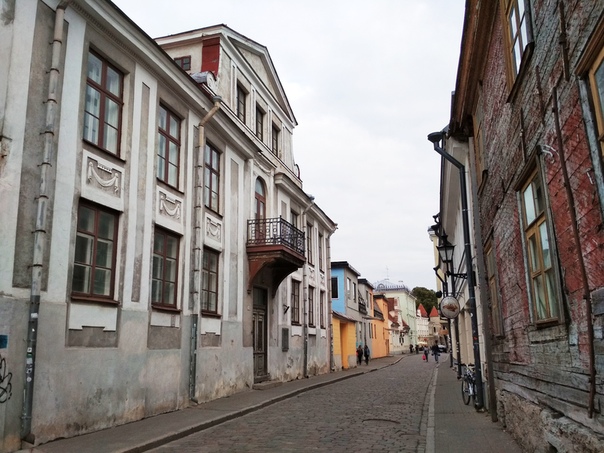
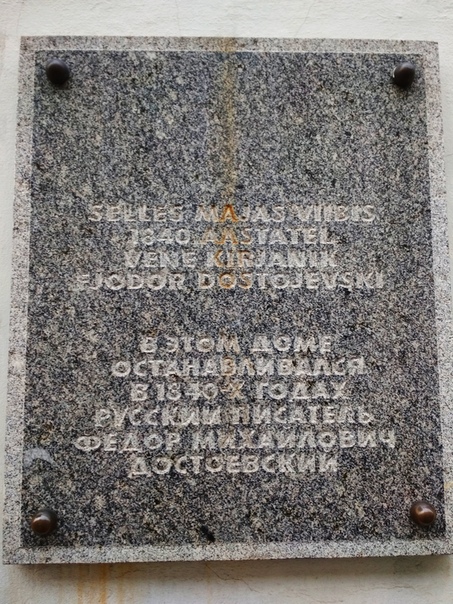

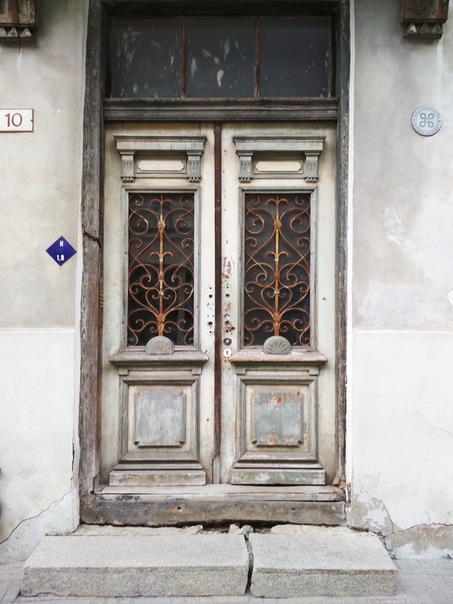
У записи 33 лайков,
0 репостов,
831 просмотров.
0 репостов,
831 просмотров.
Эту запись оставил(а) на своей стене Полина Оскольская






































